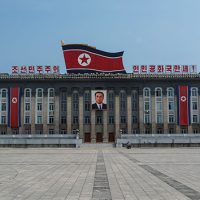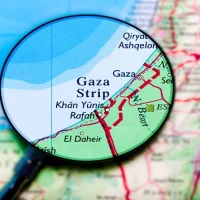
 iStock/Thinkstock(NEW YORK) — Secretary of State Rex Tillerson has signaled that the U.S. will take a more aggressive approach to North Korea’s missile and nuclear program, including possibly through pre-emptive military action.
iStock/Thinkstock(NEW YORK) — Secretary of State Rex Tillerson has signaled that the U.S. will take a more aggressive approach to North Korea’s missile and nuclear program, including possibly through pre-emptive military action.
“All options are on the table,” particularly if North Korea continues making advances in its ballistic missile and nuclear weapons technologies, Tillerson said last week at a news conference in Seoul.
“If they elevate the threat of their weapons program to a level that we believe requires action, that option is on the table,” the top U.S. diplomat said in a comment widely interpreted to refer to the possibility of pre-emptive military force.
North Korea has stated that its goal is to develop a nuclear device small enough to be placed on a long-range missile capable of reaching the United States.
ABC News takes a look at what options are available to the U.S. if North Korea continues making progress in its nuclear and ballistic missiles programs.
Sanctions top the list
At the news conference in Seoul, Tillerson said the U.S. was “exploring a new range of diplomatic, security, and economic measures.”
The secretary of state said in a later interview with the Independent Journal Review that there were “a lot of steps and a lot of distance between now and a time that we would have to make a decision” on pre-emptive military force.
He described “a staged approach” for North Korea to stand down its nuclear program.
The first step would be full implementation of sanctions targeting North Korea that have already been imposed by existing United Nations Security Council resolutions. The U.S. could also consider unilateral sanctions or seek additional steps through the United Nations and also working with other countries in the region like China.
“It is not our objective to force them into some brash action,” Tillerson said of North Korea’s leaders.
“It’s our objective for them to understand things only continue to get more difficult if they don’t change their path. We want to give [them] time to change your path,” he said.
But Tillerson also called the threat posed by North Korea’s weapons programs “imminent” and said the matter has “reached a very alarming state to us.”
Military options
Tillerson noted that no one wants to see military action on the Korean peninsula, even as he said “all options are on the table.”
So what pre-emptive military steps could the United States carry out to in North Korea?
“They have got to be able to wipe out any missile before it’s launched, which is not trivial,” said David Albright, president of the Institute for Science and International Security.
That could mean striking at North Korea’s facilities for launching or producing ballistic missiles or its nuclear facilities.
North Korea’s nuclear facility at Yongbyon is well known, but striking it could cause an environmental disaster. Easier targets would be North Korea’s missile facilities.
North Korea has two main long-range missile facilities, the Sohae Satellite Launching Station on the country’s northwest coast and the Tonghae Satellite Launching Ground in the northeast.
The Sohae facility has become a center of activity for the country’s long-range missile program, particularly its development and testing of an Intercontinental Ballistic Missile (ICBM) that could potentially reach American territory.
But the greater threat from North Korea is posed by its new medium- and intermediate-range mobile systems that are hard to track by overhead satellites and can be launched on short notice.
If the U.S. were to take military action, potential targets could be North Korea’s airfields in Hwangju, Kusong, and Wonsan provinces that have been used over the past year to test new Musudan and KN-11 missiles.
However, it might be difficult to track down those mobile systems.
“The more North Korea develops solid fueled missiles that are road-mobile, the more difficult that task becomes,” said Albright.
Military action could lead to all-out war
Albright cautioned that a pre-emptive strike carries the risk of “a conventional war involving North and South Korea with large numbers of casualties.”
“People tend to walk away from this [notion] because we just don’t want another North Korean War,” he said. “You are talking about hundreds of thousands of casualties, if not millions.”
North Korea could potentially respond to military action by firing missiles at South Korea and Japan, Albright said. Another concern is that the vast majority of North Korea’s million-man army is just north of the demilitarized zone (DMZ) that separates it from South Korea.
North Korean artillery is also capable of reaching Seoul 30 miles south of the DMZ, which means civilians could be the victims of indiscriminate artillery fire.
To contain North Korea’s response, any initial pre-emptive military action against it would have to be massive, which Albright does not think is a likely option.
“All these things always lead people to think that a negotiated, well-verified solution is by far the preferred option,” said Albright.
Copyright © 2017, ABC Radio. All rights reserved.















